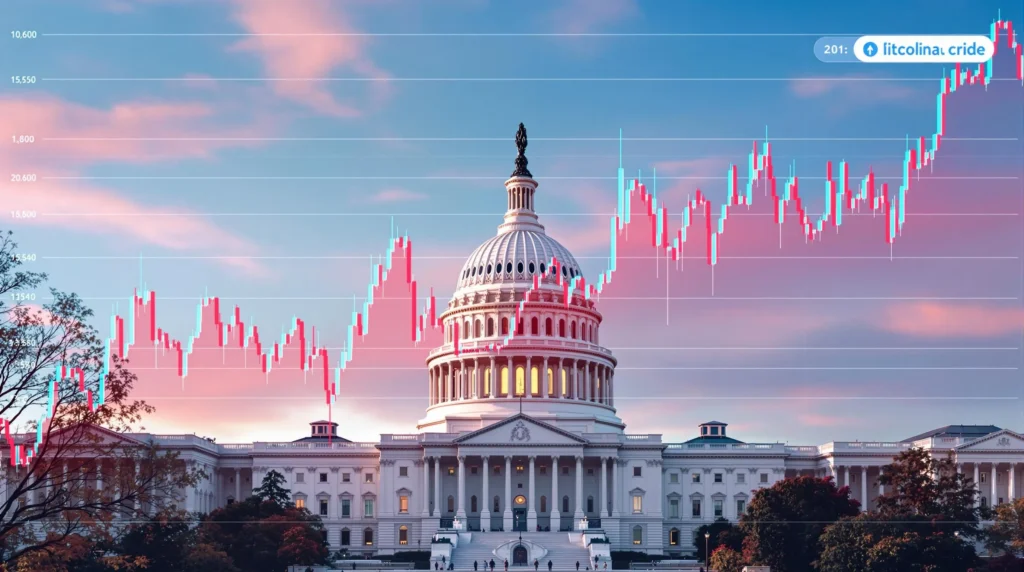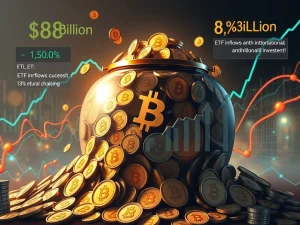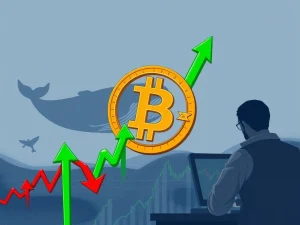Shocking Bitcoin Reserve Impact: US Plan Fuels Crypto Volatility and Futures Recoil

In the fast-paced world of cryptocurrency, even the slightest tremor in policy can send shockwaves across the market. Recently, the unveiling of the US Bitcoin reserve plan was anticipated to inject stability and confidence into the crypto market. However, the reality has been starkly different. Far from calming the waters, the plan has seemingly amplified existing uncertainties, leading to increased Bitcoin volatility and a noticeable recoil in Bitcoin futures. Let’s dive deep into what happened and what it means for investors and the broader crypto ecosystem.
Why Did the US Bitcoin Reserve Plan Underwhelm?
Expectations were high as the details of the US Bitcoin reserve plan began to surface. Many in the crypto community hoped for a robust and innovative strategy that would firmly establish the United States as a leader in digital asset management. However, upon closer inspection, the plan presented by the Trump administration appeared to fall short on several fronts. Analysts pointed to a lack of ambition and clarity as key factors contributing to the market’s tepid, and ultimately negative, response.
- Limited Scope: The plan’s scale seemed insufficient to significantly impact the vast and rapidly growing crypto market. Observers noted that the proposed reserves were smaller than anticipated, failing to project the desired image of strength and commitment.
- Vague Details: Critical details regarding the operational aspects of the Bitcoin reserve remained unclear. Questions surrounding custody, security protocols, and the long-term strategy were left unanswered, breeding uncertainty rather than assurance.
- Missed Opportunity for Innovation: Instead of pioneering a groundbreaking approach, the US Bitcoin reserve plan appeared to be a more conventional, and arguably less inspiring, initiative. This lack of innovation disappointed those who expected the US to set a new global standard in crypto asset management.
This combination of factors led to a collective sense of letdown within the crypto community. The anticipated boost of confidence simply didn’t materialize; instead, a sense of unease began to creep in.
Bitcoin Volatility Spikes: What’s Behind the Swings?
One of the immediate consequences of the underwhelming US Bitcoin reserve announcement was a noticeable increase in Bitcoin volatility. The price of Bitcoin, already known for its fluctuations, experienced sharper and more unpredictable swings. Several factors contributed to this heightened volatility:
| Factor | Description |
|---|---|
| Uncertainty and Fear: | Disappointment in the US plan created uncertainty about institutional adoption and regulatory clarity, leading to fear-driven selling. |
| Market Correction: | Some analysts believe the market was due for a correction after a period of sustained gains. The negative news acted as a catalyst for profit-taking and downward pressure. |
| Leveraged Positions: | High levels of leverage in the crypto futures market can amplify price movements. Negative sentiment triggered liquidations, further exacerbating Bitcoin volatility. |
For traders and investors, this surge in Bitcoin volatility presents both challenges and opportunities. While increased volatility can lead to higher potential profits, it also comes with elevated risks. Risk management becomes paramount in such market conditions.
Futures Recoil: A Signal of Deeper Market Concerns?
The recoil observed in Bitcoin futures markets is another significant indicator of the negative sentiment triggered by the US Bitcoin reserve plan. Futures contracts, which allow traders to bet on the future price of Bitcoin, are often seen as a barometer of market sentiment. A recoil in futures suggests that traders are anticipating further price declines or increased uncertainty in the near term.
Key observations regarding the Bitcoin futures recoil include:
- Decreased Open Interest: A reduction in open interest in Bitcoin futures contracts can indicate that traders are closing positions and reducing their exposure to the market. This suggests a move towards risk-off sentiment.
- Negative Premium: Futures contracts typically trade at a premium to the spot price of Bitcoin. A shift to a negative premium, or even a reduced premium, can signal bearish expectations and a lack of confidence in future price appreciation.
- Increased Short Positions: An uptick in short positions in Bitcoin futures indicates that more traders are betting on a price decrease. This further contributes to downward pressure on the market.
The recoil in Bitcoin futures serves as a warning sign, suggesting that the market’s reaction to the US Bitcoin reserve plan is not merely a short-term blip but potentially a reflection of deeper concerns about the direction of crypto policy and institutional support.
Navigating the Crypto Market Amidst Uncertainty
In the wake of the disappointing US Bitcoin reserve plan and the subsequent market reactions, what should crypto investors and enthusiasts do? Here are some actionable insights:
- Stay Informed: Keep abreast of developments in crypto regulation and institutional adoption. Understanding the broader policy landscape is crucial for making informed decisions.
- Manage Risk: Given the increased Bitcoin volatility, prioritize risk management. Diversify your portfolio, use stop-loss orders, and avoid excessive leverage.
- Focus on Fundamentals: In times of market uncertainty, it’s essential to focus on the fundamental strengths of Bitcoin and other cryptocurrencies. Assess long-term adoption trends, technological advancements, and use cases.
- Exercise Caution: Approach the market with caution and avoid impulsive decisions driven by fear or hype. Conduct thorough research before making any investment moves.
The Path Forward for Bitcoin and the Crypto Market
While the initial reaction to the US Bitcoin reserve plan has been negative, it’s important to remember that the crypto market is dynamic and resilient. Setbacks can often pave the way for future growth and innovation. The current situation highlights the need for clearer, more ambitious, and globally coordinated regulatory frameworks for cryptocurrencies. As the industry matures, we can expect further evolution in policy and institutional engagement.
In conclusion, the underwhelming US Bitcoin reserve plan has indeed injected a dose of Bitcoin volatility into the crypto market and triggered a recoil in Bitcoin futures. However, this episode also serves as a valuable reminder of the market’s sensitivity to policy announcements and the importance of robust regulatory frameworks. For investors, navigating this landscape requires a balanced approach of informed decision-making, prudent risk management, and a long-term perspective on the transformative potential of cryptocurrencies.









